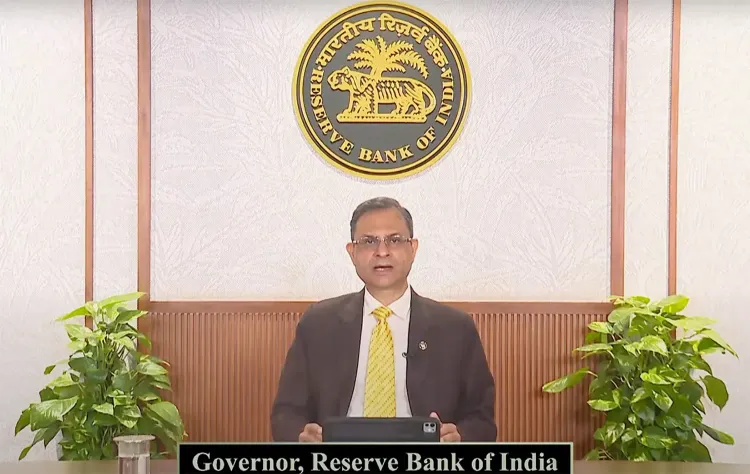Is It the RBI's Role to Make Decisions for Bank Boards?

Synopsis
Key Takeaways
- Indian banks have matured significantly over the past decade.
- The Central Bank should not micromanage bank decisions.
- Regulators must empower banks to evaluate cases on their merits.
- Recent RBI measures aim to enhance banking operations.
- SBI has transformed into a $100 billion company due to reforms.
Mumbai, Nov 7 (NationPress) Emphasizing that Indian banks have significantly matured over the past decade, RBI Governor Sanjay Malhotra stated on Friday that the Central Bank does not intend to micromanage operations. He highlighted that no regulatory body should replace the judgment of bank boards, and each case must be evaluated based on its merits.
Speaking at the State Bank of India’s (SBI) Banking and Economics Conclave in the financial hub, he pointed out the importance of considering factors like credit and deposit growth, enhanced asset quality, profitability, and the rise in returns on assets and equity.
Malhotra further noted that it is essential to empower regulated entities to make decisions grounded in the specifics of each case.
He likened the role of a regulator to that of “a gardener,” where the Central Bank oversees the growth of a plant and trims excess growth to cultivate a collective, orderly, and beautiful garden.
Last month, the RBI introduced 22 initiatives, such as permitting banks to finance acquisitions, raising limits on loans secured by shares, and proposing draft guidelines for moving towards an expected credit loss (ECL) framework for loan loss provisioning.
Malhotra mentioned that the RBI aims to enhance rule-making transparency, driven by data and evidence, following appropriate public consultations. He added that supervisory actions have effectively moderated unsustainable growth and helped shape a resilient and robust banking system.
He also stated that SBI, India’s largest public sector lender, has transformed from incurring losses in 2018 to becoming a $100 billion entity, thanks to regulatory and structural reforms.
The introduction of the Insolvency and Bankruptcy Code (IBC) in 2016 and the resolution frameworks established under the Pursuant Resolution Paradigm via out-of-court workouts have drastically changed India’s credit culture, he noted.









